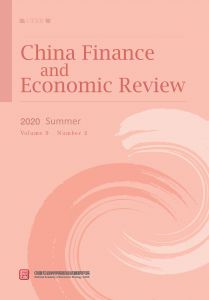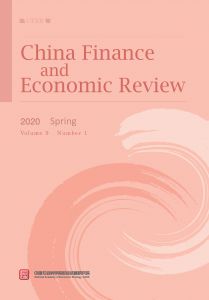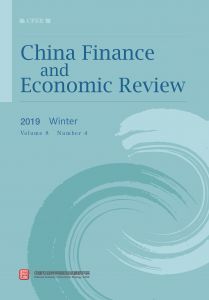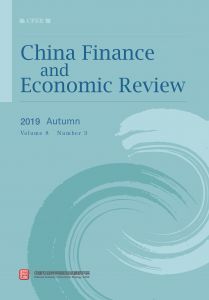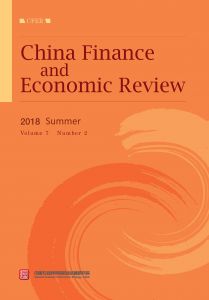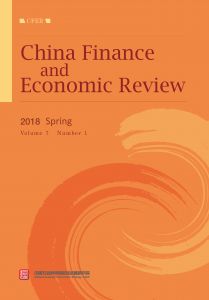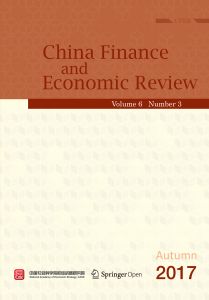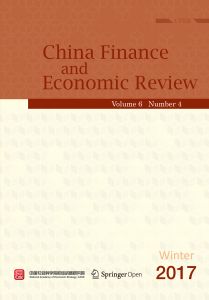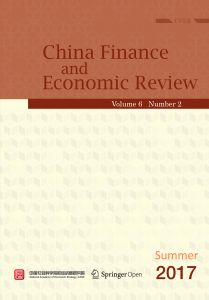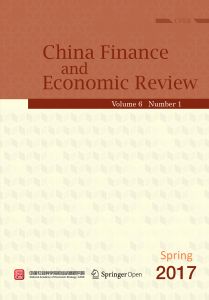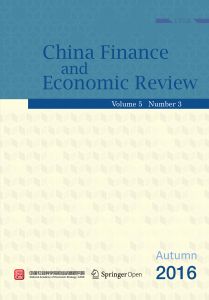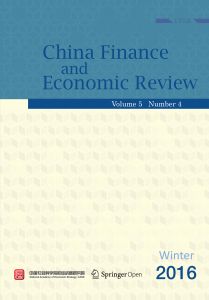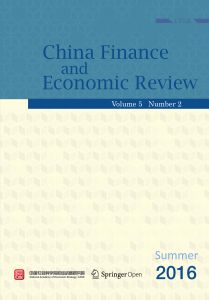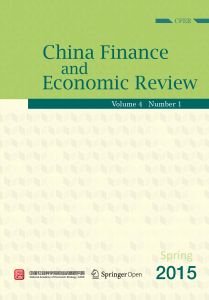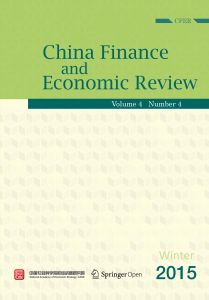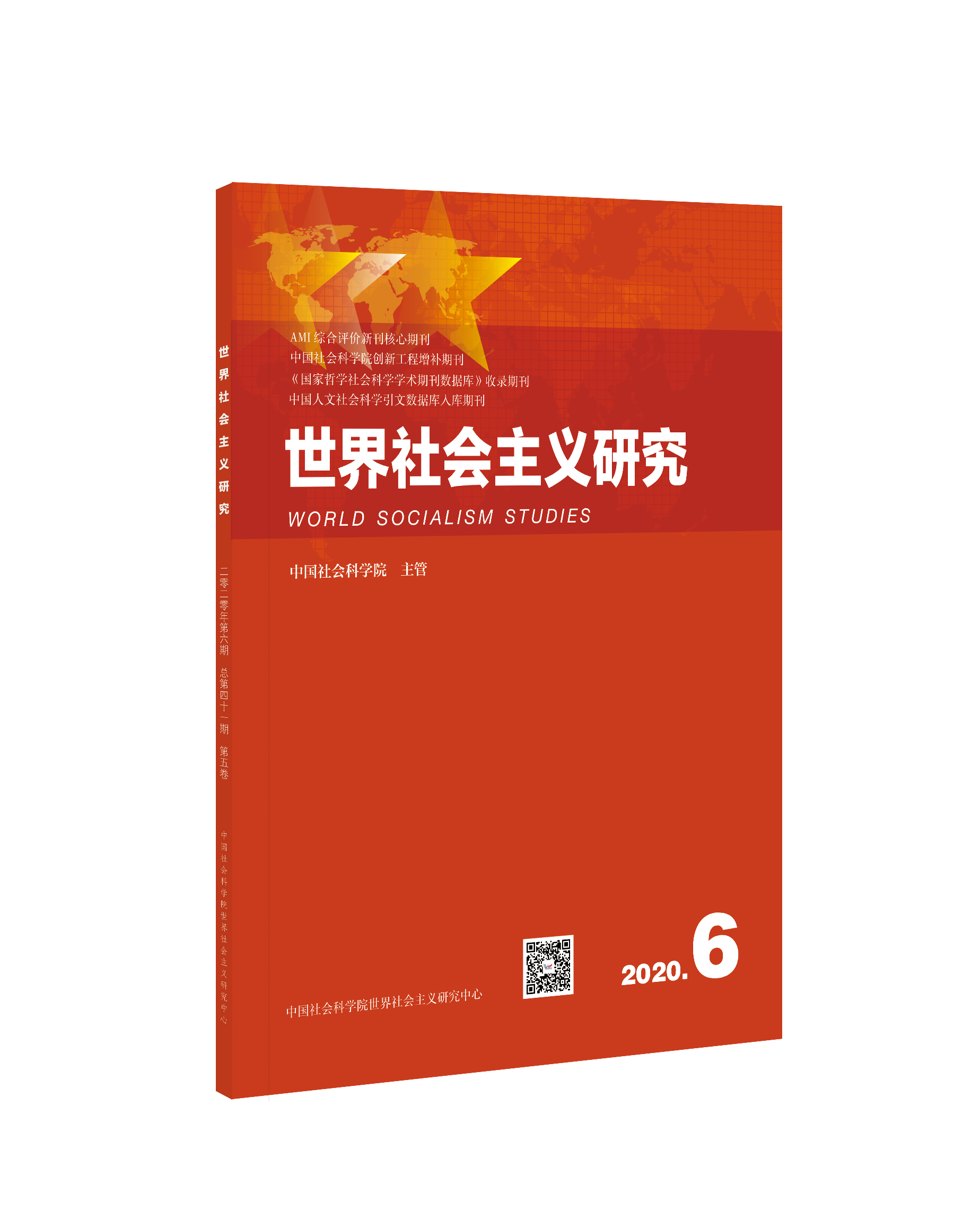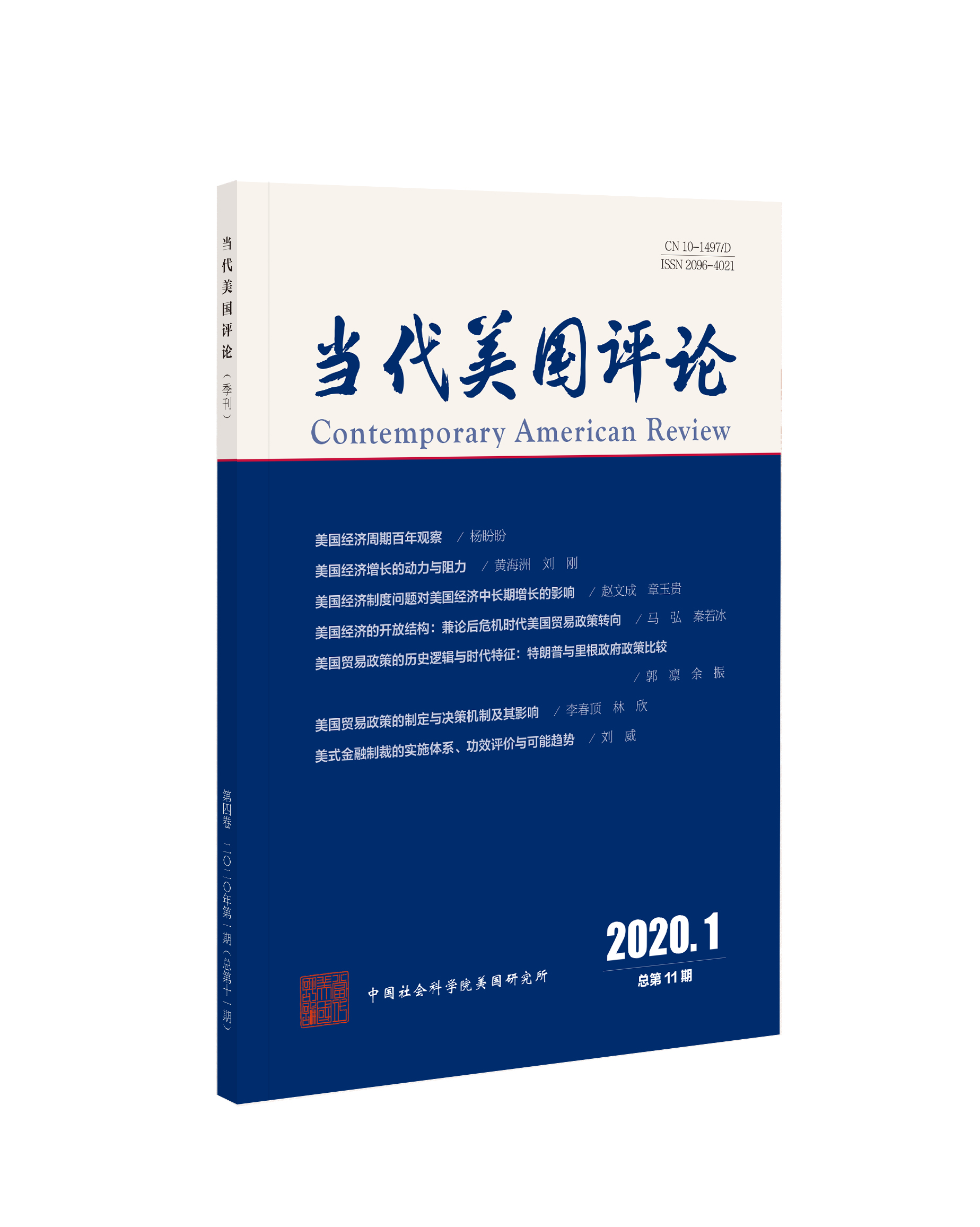最新期刊

目录
过往期刊
参考文献
-
Instructions for Authors
-
编委会
-
Prospects for economic growth in China: putting slowdown in perspective
-
1. In the long-term, the growth rate must change
-
2. Theoretical predictions often lag behind the facts
-
3. Prospects for Chinese economic growth: slowdown isn’t a sign of the apocalypse
-
-
Analysis of the costs and benefits of citizenization in China
-
1. Introduction
-
2. Who need to become urban citizens?
-
3. An objective view of the benefits of citizenization
-
4. Scientific analysis of the costs
-
5. Breaking outside the current matrix of vested interests
-
-
A study on budget transparency: an analytical framework for tax-sharing system transparency
-
1. Literature review
-
2. A benchmark for budget transparency
-
3. System framework for budget transparency
-
4. Conclusions and suggestions
-
-
An assessment of public services based on public risks and fiscal risks——Public finance as the foundation and pillar of state governance
-
1. Assessment of public services: an analytical framework
-
2. A general assessment of Chinese public services on the basis of public risks and fiscal risks
-
3. Conclusions and policy implications
-
-
Greater emphasis on fair taxation as China deepens tax reform
-
1. Modern theories on fair taxation
-
2. Analysis of the current taxation system in China from the equity point of view
-
3. Building a modern and more equitable taxation system through comprehensive deepening of reform
-
-
Economic impact of land finance and subsequent risk response
-
1. Introduction
-
2. The impact of land finance on the economic growth
-
3. The impact of land finance on the economic structure
-
4. Risks during post-“land finance” period
-
5. Conclusions
-
-
Economic globalization and China’s choice
-
1. Modern economic globalization is changing
-
2. The changing rules of the global economy after the crisis
-
3. The strategic choices of China in dealing with the changing situation of globalization
-
-
Building an open economic powerhouse driven by domestic demand
-
1. Introduction
-
2. A general analysis of the relationship between internal and external demand
-
3. The historical evolution of the relationship between China’s internal and external demand and China’s realistic choice in the context of economic transformation
-
4. Approaches to establishing an open economy led by internal demand for a great power
-
-
Trade in goods among China, Japan, and South Korea and the road to a free trade area
-
1. The development of CJK trade in goods
-
2. Chinese scholars’ general views on CJKFTA
-
3. The approach to establishing a CJKFTA
-
按年份浏览:
- 全部
- 2020
- 2019
- 2018
- 2017
- 2016
- 2015
- 2014
- 2013
[1][1]Baumol, W. J. (1967). Macroeconomics of unbalanced growth: the anatomy of urban crisis. American Economic Review, 57 (3), 415-426.
[2][2]Commission on Growth and Development. (2008). The growth report: strategies for sustained growth and inclusive development. China Finance Publishing House. (In Chinese)
[3][3]Eichengreen, B., Donghyun, P., & Kwanho, S. (2011). When fast growing economies slow down: international evidence and implications for China. NBER Working Paper , 16919.
[4][4]Golley, J., & Tyers, R. (2012). Demographic dividends, dependencies and economic growth in China and India, Asian Economic Papers, 11 (3), 1-26.
[5][5]Hu, A. G., & Cai, L. M. (2011) Changes in human resources based on the sixth census: from demographic dividend to human resources bonus, Tsinghua Journal of Education (Tsinghua Daxue Jiaoyu Yanjiu ), 32 (4), 1-8.
[6][6]Jiang, X. J. (2004). Entering a new stage: China’s challenges and strategies for economic development. Economic Research Journal (Jingji Yanjiu ), 10, 4-13.
[7][7]Kindleberger, C, P., (2003). World Economic Primacy: 1500-1990 . Commercial Press. (In Chinese)
[8][8]Oulton, N. (2001) Must the growth rate decline? Baumol’s unbalanced growth revisited. Oxford Economic Papers, 53 (4), 605-627.
[9][9]Triplett, J. E., & Bosworth, B. P. (2003). Productivity measurement issues in services industries: Baumol’s disease has been cured. Economic Policy Review, 9 (3), 23-33.
[10][10]World Bank and the State Council Development Research Center. (2012). China in 2030: building a modern, harmonious, and creative society .
[11][11]Wang, X. L. (2000). The sustainability of China’s economic growth and institutional changes. Economic Research Journal (Jingji Yanjiu ), 7, 3-15.
[12][12]Chen, J. G., Huang, Q. H., Lü, T., Li, X. H., etc. (2012). Chinese industrialization process report (1995-2010 ), Beijing: Social Sciences Academic Press.(In Chinese)
[13][13]Chin, L. (2004). Public housing governance in Singapore: current issues and challenges . Department of Real Estate, National University of Singapore.
[14][14]Lan, J. Z. (2013). How does Japan turn farmers into citizens? Reference News, 2013-4-24.
[15][15]National Bureau of Statistics. (2014). Statistical Bulletin of National Economic and Social Development .
[16][16]Rawls, J. (1971). A theory of justice . Harvard University Press.
[17][17]Wong, Tai-chee and Xavier, G. (2004). A roof over every head: singapore’s housing policy between state monopoly and privatization . IRASEC-Sampark.
[18][18]Alesina, A., & Perotti, R. (1996). Income distribution, political instability, and investment. European Economic Review, 40 (6), 1203-1228.
[19][19]Chari, V., Jones, L. E., & Marimon, R. (1997). The economics of split-ticket voting in representative democracies. American Economic Review, 87 (5), 957-976.
[20][20]Fu, W. L. (2012). Immigration, incremental budget, and the congestion on local public goods. Economic Issues in China (Zhongguo Jingji Wenti ), 1, 41-53.
[21][21]International Monetary Fund. (2007). Manual on Fiscal Transparency , Washington, D.C.
[22][22]Kopits, G., & Craig, J. D. (1998). Transparency in Government Operations, IMF Occasional Paper , 158.
[23][23]Liu, X. X, & Li, J. F. (2008). A study on fiscal transparency in China. Journal of Xiamen University (Xiamen Daxue Xuebao ), 6, 34-41.
[24][24]Ling, L., & Zhang, L. (2011). Limits and efficiency of a transparent fiscal system: interpretation of an analytical framework. Contemporary Finance & Economics (Dangdai Caijing ), 6, 23-29.
[25][25]Li, H., & Ren, L. Y. (2013). Fiscal decentralization, budget constraints, and supply efficiency of local public goods. Contemporary Finance and Economics (Dangdai Caijing ), 3, 35-43.
[26][26]Lu, H. Y., & Shan, X. P. (2012). Citizens’ rights, democratic budgeting, and budget information release, Public Finance Research (Caizheng Yanjiu ), 4, 19-21.
[27][27]Qian, H. G. (2009). Fiscal decentralization, budget soft constraints, and vicious competition among local governments. Public Finance Research (Caizheng Yanjiu ), 3, 17-19.
[28][28]Sun, W. J. (2013). Public governance and public democracy: fiscal transparency in China. Research on Financial and Economic Issues (Caijing Wenti Yanjiu ), 8, 84-88.
[29][29]Wang, Y. J. (2003). Fiscal transparency in globalization: gap and direction for China. International Economic Review (Guoji Jingji Pinglun ), 4, 34-39.
[30][30]Wu, J. P. (2009). Public economics , Wuhan University Press. (in Chinese)
[31][31]Wu, J. P. (2012). Budget reform in Chinese local governments , China Financial and Economic Publishing House. (in Chinese)
[32][32]Xiao, P., & Li, Y. (2011) Fiscal Transparency: Environmental Foundation, Motivation, and Promoting Path. Finance and Trade Economics (Caimao Jingji ), 1, 21-25.
[33][33]Zhao, Q. (2009). Fiscal Information Release and Fiscal Transparency: Concept, Rules and International Experience. Finance and Trade Economics (Caimao Jingji ), 11, 61-65.
[34][34]Buchanan, J. M. (1991). Public Finance . China Financial & Economic Publishing House. (In Chinese)
[35][35]Fu, D. P., & Li, C. W. (2010). A Study of Relative Issues Concerning the Cost of Public Administration . Internal Report, March.
[36][36]Liu, S. X., Yang, L. C., & Li, C. W. (2005). Optimizing the Structure of Public Revenue: One of the Key Measures to Increase Fiscal Revenue. Journal of Hangzhou Teachers College (Hangzhou Shifan Xueyuan Xuebao ), 5, 1-8.
[37][37]Liu, S. X. (2010). Public Finance from the Angle of Public Risks . Economic Science Press. (In Chinese)
[38][38]Prigogine, I. (1998). The End of Certainty . Shanghai Science and Technology Education Publishing House. (In Chinese)
[39][39]Smith, A. (1776). The Wealth of Nations . London: J. M. Dent & Sons.
[40][40]Chen, E. (2009). On the equity principle of personal income tax. China Economist (Jingji Shi ), 1, 174.
[41][41]Huang, H. (2007). Taxation . China Renmin University Press. (In Chinese)
[42][42]Petty, W. (1981). Economic theory collection of William Petty . Commercial Press. (In Chinese)
[43][43]Smith, A. (1981). An inquiry into the nature and causes of the wealth of nations . Commercial Press. (In Chinese)
[44][44]Wang, C. L. & Gao, P. Y. (1998). Contemporary Western financial and economic theory . Commercial Press. (In Chinese)
[45][45]Xiao, J. (2012). Continue to promote the reform of value-added tax system. Economic Daily (Jingji Ribao ), 2012-4-1.
[46][46]Zhang, B. (2013). How to understand tax burden stabilization. China Taxation News (Zhongguo Shuiwubao ), 2013-12-23.
[47][47]Barro, R. J. (1990). Government spending in a simple model of endogenous growth. Journal of Political Economy, 98 (5), S103-S126.
[48][48]Du, X. J., Huang, Z. H., & Wu, C. F. (2009). China’s land fiscalization and economic growth: an analysis based on provincial panel data. Finance & Trade Economics (Caimao Jingji ), 1, 60-64.
[49][49]He, R. L., (2011). Local fiscal behavior risk research in post-“land finance” period based on finance social science perspective. Issues in Agricultural Economy (Nongye Jingji Wenti ), 1, 95-99.
[50][50]Liao, C. H., & Yu, K. (2006). The composition of local public expenditure and regional economic growth. Finance & Trade Economics (Caimao Jingji ), 11, 41-47.
[51][51]Liu, S. Y., & Jiang, X. S. (2005). Financial risks of land financing by local governments. China Land Science (Zhongguo Tudi Kexue ), 5, 3-9.
[52][52]Xue, B., & Chi, X. (2010). Land finance, rent-seeking & economic growth. Public Finance Research (Caizheng Yanjiu ), 2, 27-30.
[53][53]Yan, C. L., & Gong, L. T. (2009). Public expenditure, taxation and long run growth. Economic Research Journal (Jingji Yanjiu ), 6, 4-16.
[54][54]Ye, J. P. (2012). Post-land finance period may come soon. China Real Estate Market (Zhongguo Dichan Shichang ), 1, 94.
[55][55]Zou, H. (1996). Taxes, federal grants, local public spending, and growth. Journal of Urban Economics, 39 (3), 303-317.
[56][56]Elvin, M. (1973). The pattern of the Chinese past . Stanford University Press.
[57][57]Gilpin, R. (2008). Hegemonic war and International change. In Richard K. Betts, (Ed), Conflict after the cold war: arguments on causes of war and peace . New York: Pearson-Longman.
[58][58]Ikenberry, G. J. (2001). Getting hegemony right. The National Interest , 63, 17.
[59][59]Leonard, M. (2013). Why convergence breeds conflict. Foreign Affairs, 92 (5), 125-135.
[60][60]Kenwood, A.G.(1996). Growth of the international economy . Economic Science Press.(In Chinese)
[61][61]Maddison, A. (2008). The long-term performance of the Chinese economy . Shanghai People’s Publishing House. (In Chinese)
[62][62]Nathan, A., & Scobell, A. (2012). The sum of Beijing’s fears: how China sees America. Foreign Affairs, 91 (5), 32-47.
[63][63]Li, K. Q. (2012). Thoroughly applying the strategy of boosting domestic demand. English Edition of Qiushi Journal , 4, 3-10.
[64][64]Li, D. K. (2014). Never allow the economy to stall or glide. (Available at: http://www.xcf.cn/tt2/201403/t20140331_566171.htm)
[65][65]Liu, H., Zhang, Y. Y., & Liu, H. W. (2013). The analysis of debt characteristics and risks of local government financing platforms: a case study on a certain province in eastern China. Journal of Finance and Economics (Caijing Yanjiu) , 5, 123-133.
[66][66]Research Team of the Rural Survey Organization. (2003). Suggestions about expanding demand from rural residents of China. Statistical Research (Tongji Yanjiu) , 8, 8-12.
[67][67]Wei, S. (2014). The realistic situation and long-term growth prospects of China’s economy. (Available at: http://mp.weixin.qq.com/s?__biz=MjM5OTgwODA0MA==&mid=200071516&idx=1&sn=6e014aeb5b714ee837443a06b0237fe0&scene=1#rd)
[68][68]Zhang, J. (2013). Personal Anthology of Zhang Jun . Shanxi: Shanxi Economic Publishing House. (In Chinese)
[69][69]Zhang, Y. Y., & Liu, Z. B. (2012). The preferences of consumers and the problems in the development of China’s service industry—evidence under general equilibrium. Economic Perspectives (Jingjixue Dongtai) , 10, 57-64.
[70][70]Chai, Y. (2004). The progress of economic cooperation in East Asia and relative thinking. World Economy (Shijie Jingji) , 3, 72-76.
[71][71]Liu, X. F. (2004). Reflections on CJK FTA. Contemporary Asia-Pacific Studies (Dangdai Yatai) , 7, 42-45.
[72][72]Liu, Z. L., & Sheng, W. (2008). A comparative study on FTA strategies of China, Japan & ROK, Northeast Asia Forum (Dongbeiya Luntan) , 17(1), 54-60.
[73][73]Lu, X. D., & Shao, Z. Q. (2002). The construction of Japan and South Korea free trade area. Contemporary Asia-Pacific Studies (Dangdai Yatai) , 12, 52-55.
[74][74]Shen, M. H. (2011). Economic analysis of CJK FTA. International Economic Cooperation (Guoji Jingji Hezuo) , 3, 38-42.
[75][75]Shi, Z. X., Jiang, X. L., Li, L. Z., & Shi, S. D. (2001) Analysis of mutual economic impact among Japan and South Korea. World Economy (Shijie Jingji) , 4, 37-43.
[76][76]Song, Q., & Chen, C. Y. (2004). What will be brought by CJKFTA. Commercial Culture (Shangye Wenhua) , 2, 52-55.
[77][77]Tang, X. L. (2004). CJK FTA in the context of Northeast Asian Economic Development. Nankai Economic Studies (Nankai Jingji Yanjiu) , 6, 78-82.
[78][78]Tian, Z. J., Li, Y. X., & Sun, H. (2010). Foreign economic relations among China, Japan, and Korea in the post-crisis era. Contemporary Economy of Japan (Xiandai Riben Jingji) , 5, 14-21.
[79][79]Xu, M. (2012). Progress, Impact and Prospect of CJK FTA. Japanese Studies (Riben Xuekan) , 5, 109-124.
[80][80]Yuan, C. J. (2011). The thinking of CJKFTA. International Economic Cooperation (Guoji Jingji Hezuo) , 10, 92-94.
[81][81]Zhang, X. J. (2003). How to meet the long-term interests of the three countries--the choices to build the institutional framework of economic cooperation among Japan and South Korea. International Trade (Guoji Maoyi) , 12, 18-22.
[82][82]Zhang, Q., Lü, G., & Xu, H. Q. (2008). Analysis of the impacts of CJK FTA on manufacturing. Practices in Foreign Economic Relations and Trade (Duiwai Jingmao Shiwu) , 5, 7-10.
[展开]
相关推荐
手机可扫码阅读


